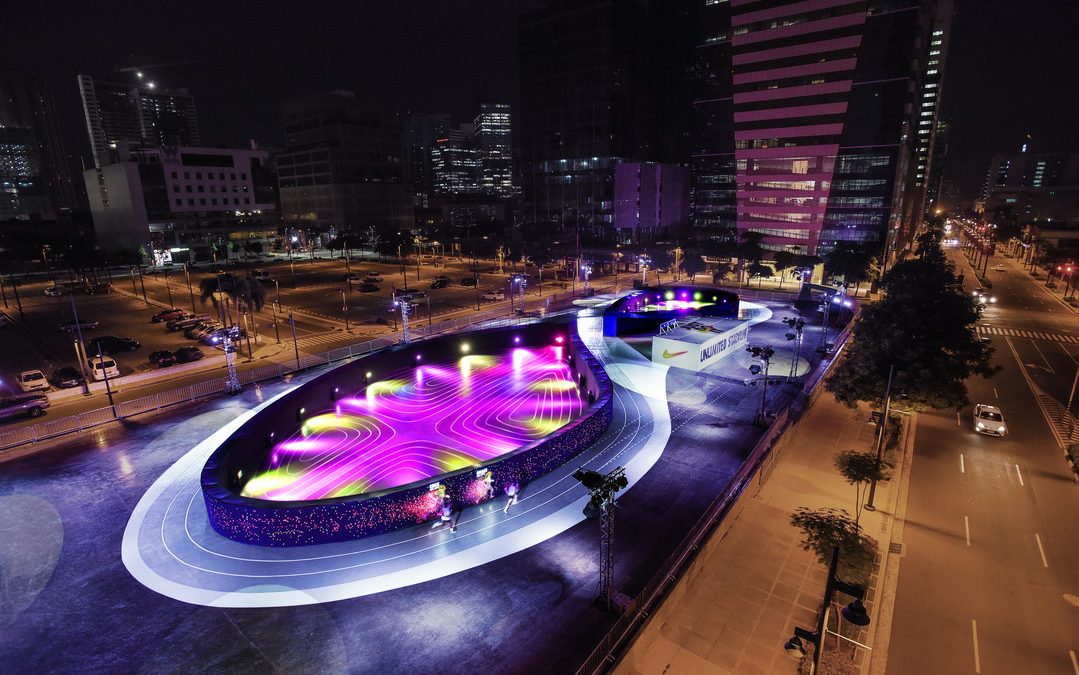
A sense of place: at the crossroads of brand experience and urban planning

No longer content with sponsoring sports stadiums, staging art festivals and invading our social media newsfeeds, brands that once relied on conventional media channels to reach their audiences are finding new ways to communicate.
Last year the Gold Design Lion at Cannes went to a Thai property developer for their initiative to create “Unusual Football Pitches” in a Bangkok suburb, forging spaces that allow young people to come together to play football. Though the business responsible for the project isn’t a consumer brand, the initiative is arguably much more likely to build goodwill amongst city residents than any amount of PR dollars. Why pay for ineffective, expensive billboards when you actually make a difference?
In 2015 French street-wear label Pigalle created a basketball court between two buildings in the 9th arrondissement in Paris, establishing their positioning as a fashion brand with street cred in one bold, colourful move (they hold fashion shows and press events in this uniquely instagrammable space too of course). This year the court got a makeover in collaboration with the global authority on urban branding – Nike. The notion of city spaces intersecting with brand experiences is not new, but we are seeing more of it. It’s what Rinske Brand, founder of BRAND The Urban Agency calls ‘brand urbanism’. She explains – “Brand urbanism is collaboration between a city and a brand in which the brand (partly) launches or funds a project in exchange for visibility.” For brands, a relevant and well executed urban experience like those delivered by Pigalle or Nike accomplish several things – they help bring your purpose to life in an immersive way; they allow you to connect with your consumers by dramatising your brand experience, and they create earned media that can amplify the modest impact of the original execution into the status of social media folklore.
“Branded experiences like these set a new context for consumer engagement”, Darren Watson, Creative Director of retail consultancy Watsonand explains. “They are an opportunity for a brands to show their heartbeat; to create experiences that offer a counter to the digital world with something not just real, but hyper real. In this way, they answer a longing to connect with like minded people around shared passion points.” Nike is masterful at understanding those passion points. Their Unlimited Stadium in Manila, conceived by BBH Singapore, took over a whole city block and replaced it with an experience that ‘fused the virtual and physical worlds’, allowing runners to ‘engage in a virtual race against avatars of themselves’.
Clearly, inserting your brand into the existing fabric of a city is a great way to be ‘part of a community’ – an increasingly common objective for 21st century brands. After all, people live in cities, not in stores or in the social media pages of the brands we buy. And if your brand is part of a cool city, you’re also a cool brand, as House of Vans proves. The grittier the streets, the shinier the reflected glory.
But the implications for brands are further reaching than the specialised niche of urban experiences. With the rise of the sharing economy our expectations are changing. Retail is becoming instantaneous – we expect and demand any product or service with a few swipes and a thumbprint on our phone. As online retail channels increasingly deliver purely commercial transactions, brand experiences are one of the few ways in which a brand can shape those pivotal moments of connection with people.
This is an edited version of a piece originally written for The Drum. https://www.thedrum.com/asia-pacific